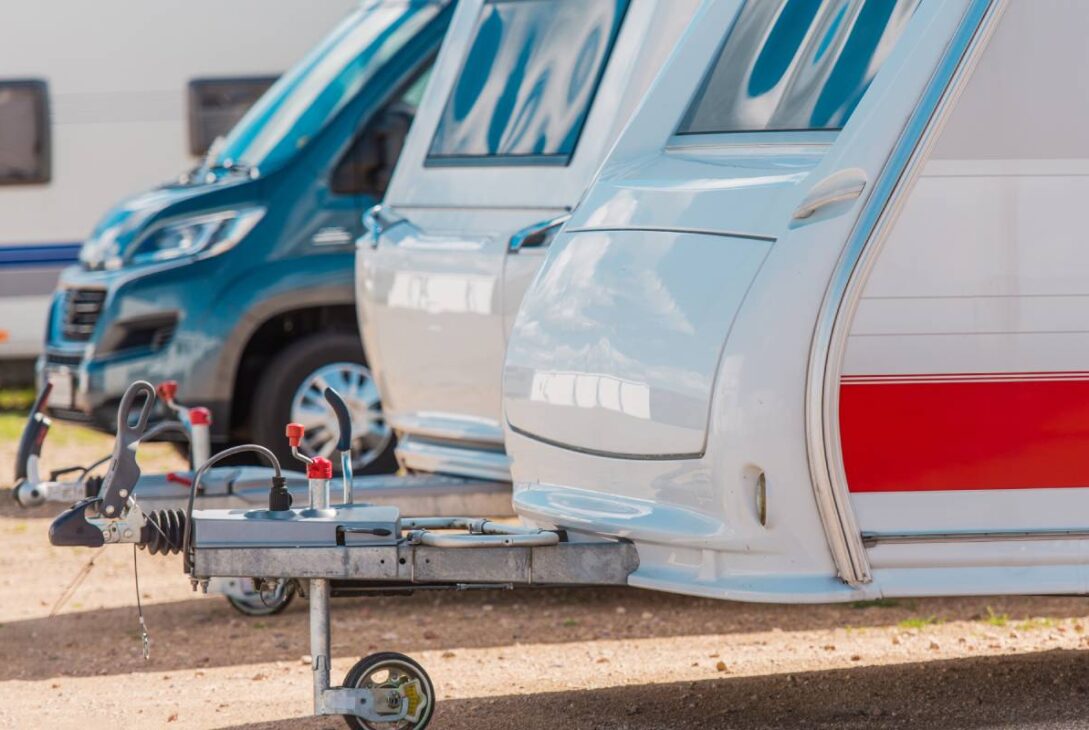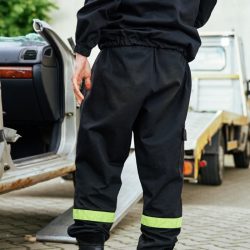Australia’s vast landscapes, open roads, and scenic coastlines make caravanning and camping two of the most enjoyable ways to explore the country. Whether you’re heading off for a weekend getaway or planning a cross-country adventure, having the right setup can make all the difference.
But before you hitch up and hit the highway, understanding your caravan towing capacity is absolutely essential. Failing to do so doesn’t just risk damaging your vehicle—it can also compromise your safety and result in hefty fines.
This guide breaks down everything you need to know about towing capacity, vehicle limits, weight terminology, and safe practices when hauling a caravan long distances—so your next camping or caravanning trip is smooth, safe, and enjoyable.
Understanding Towing Capacity
At its simplest, towing capacity refers to the maximum weight your vehicle can legally and safely tow. This limit is determined by the vehicle manufacturer and takes into account the design of your engine, transmission, suspension, and brakes.
However, towing capacity isn’t just one number—it involves several related weight limits that together determine what’s safe to tow. Let’s unpack these key terms.
Key Weight Terms You Need to Know
1. Tare Mass
This is the weight of the caravan when it leaves the manufacturer, with no passengers, luggage, or water in the tanks. It includes factory-fitted accessories like gas bottles and batteries.
2. Aggregate Trailer Mass (ATM)
The ATM is the total weight of the caravan when it’s fully loaded—this includes luggage, water, gas, and any aftermarket accessories.
3. Gross Trailer Mass (GTM)
This refers to the weight supported by the caravan’s wheels when it’s coupled to the towing vehicle. It’s usually lower than the ATM since part of the weight is carried by the tow ball.
4. Tow Ball Download (TBD)
Also known as tow ball weight, this is the downward force exerted on the tow ball by the caravan’s coupling. Typically, this should be around 10% of the caravan’s ATM, although the exact ratio can vary by manufacturer.
5. Gross Vehicle Mass (GVM)
The GVM is the maximum total weight of your vehicle, including passengers, fuel, luggage, and the tow ball download.
6. Gross Combined Mass (GCM)
This is one of the most critical figures—it represents the maximum allowed weight of both your fully loaded vehicle and caravan combined. Exceeding this limit can lead to serious safety risks and legal consequences.
How to Calculate Your Safe Towing Capacity
To determine how much you can safely tow, start with the manufacturer’s stated maximum towing capacity (found in your owner’s manual or compliance plate). Then, account for:
- Weight of passengers and cargo in your tow vehicle
- Tow ball download, which adds to your vehicle’s GVM
- Accessories like roof racks, bull bars, and recovery gear
- Additional fluids or fuel tanks
If you exceed your GVM or GCM, your vehicle may struggle to perform properly, especially on hills or rough terrain. It can also void your insurance in case of an accident.
When in doubt, weigh your setup at a public weighbridge to get accurate readings. This is particularly important before hauling a caravan long distances, where weight distribution and load stability matter more than ever.
Braked vs Unbraked Towing Capacity
All vehicles have two towing limits:
- Unbraked towing capacity: This applies when the trailer or caravan has no independent braking system. In Australia, this limit is typically capped at 750 kg.
- Braked towing capacity: Applies when the caravan has its own brakes. This figure is always higher—often between 1,500 kg and 3,500 kg depending on the vehicle.
If your caravan weighs over 750 kg (which most do), you’ll need a braked trailer setup to stay legal and safe.
The Importance of Correct Weight Distribution
Improper weight balance is one of the biggest causes of caravan sway, instability, and even accidents. Here are some quick tips for better load management:
- Keep heavy items low and over the caravan’s axle.
- Distribute weight evenly from left to right.
- Avoid placing too much weight at the rear, as it can cause fishtailing.
- Maintain correct tow ball download—too light can cause instability, while too heavy can overload your rear suspension.
A weight distribution hitch can also help level the vehicle and caravan, improving steering, braking, and control.
Legal and Safety Requirements in Australia
Towing regulations vary slightly by state, but the following rules generally apply across the country:
- The caravan’s ATM must not exceed the towing vehicle’s rated capacity.
- Safety chains must be correctly rated and attached.
- Trailer brakes are mandatory for caravans over 750 kg.
- Over 750 kg: mechanical or electric brakes required.
- Over 2,000 kg: electric brakes must be operable from the driver’s seat.
- Breakaway systems are mandatory for caravans over 2,000 kg ATM.
- Ensure all lights, reflectors, and indicators are working properly.
- Your mirrors must give a clear rearward view of the caravan’s sides.
Failure to meet these legal requirements can lead to fines or even loss of insurance coverage in the event of an accident.
Choosing the Right Tow Vehicle
Not all 4WDs and SUVs are made equal when it comes to towing. When selecting a towing vehicle, consider:
- Engine power and torque: Diesels are preferred for consistent low-end torque.
- Transmission: Automatic transmissions with towing modes handle long distances better.
- Wheelbase and suspension: Longer wheelbases and stiffer suspensions provide more stability.
- Cooling systems: Towing puts stress on your vehicle, so ensure your cooling system is up to the task.
Popular Australian choices for towing caravans include the Toyota LandCruiser, Ford Ranger, Isuzu D-MAX, and Mitsubishi Pajero Sport—all known for robust towing performance.
Preparing Your Caravan for Long-Distance Towing
If you plan on hauling a caravan long distances, proper preparation is key to a smooth and safe journey.
- Check your tyres: Ensure both the vehicle and caravan tyres are in excellent condition and inflated to the correct pressures.
- Inspect the brakes and bearings: Have your caravan’s braking system and wheel bearings serviced regularly.
- Secure all items: Inside the caravan, ensure cupboards and drawers are latched. Loose items can become dangerous projectiles.
- Adjust mirrors: Extended towing mirrors can greatly improve visibility.
- Plan rest stops: Towing requires more concentration—stop every 2 hours to rest and check your rig.
- Distribute weight properly: Especially when driving over long distances or uneven roads.
- Carry spares: Always have a spare wheel for both the car and caravan, plus basic tools and fuses.
Towing Techniques for Maximum Safety
Even with the right setup, safe towing comes down to your driving habits. Keep these in mind:
- Increase stopping distance: Your braking distance can double or even triple when towing.
- Take corners wide: Caravans cut corners, so give yourself more room.
- Slow down on descents: Use lower gears and engine braking instead of relying solely on brakes.
- Avoid sudden steering movements: These can cause sway or jackknifing.
- Use towing aids: Sway control devices or electronic stability systems can help keep your caravan in line.
If you’re new to towing, consider enrolling in a caravan towing course. Many Australian motoring clubs and caravan associations offer them to help you gain confidence behind the wheel.
Common Mistakes to Avoid
- Overloading your caravan: Even small excesses can compromise handling and safety.
- Ignoring tow ball weight: Too much or too little pressure can destabilise your setup.
- Skipping maintenance: Regular checks are vital to prevent mechanical issues on the road.
- Incorrect tyre pressure: This can lead to poor fuel economy or dangerous blowouts.
- Underestimating wind resistance: Strong crosswinds can affect control—reduce speed when necessary.
Final Thoughts
Towing a caravan safely is all about understanding your limits—both mechanical and legal. From knowing your vehicle’s towing capacity and weight distribution to maintaining your brakes and tyres, every detail matters.
If you plan on hauling a caravan long distances, take the time to prepare thoroughly. Check your weights, plan your route, and perform all necessary maintenance to ensure your trip is both enjoyable and safe.
By following this towing capacity guide and staying within your limits, you’ll not only protect your vehicle and caravan but also enjoy the freedom of Australia’s open roads with peace of mind.









